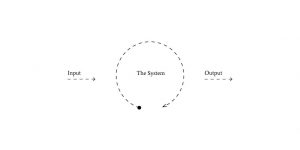Management Information Systems (MIS) is all about people, technology, organizations, and systems and how they all work together to make our society more efficient. In general, MIS professionals use technology to help people and organizations maximize efficiency. A system is defined as “a set of principles or procedures according to which something is done”, and is a combination of people, technology, and processes. The core of a system is the processor–the processor can independently perform or process all computational tasks. An example of a system is the process you go through as a buyer to order something off Amazon: the buyer logs onto the Amazon website, searches for the desired product, adds she item to their shopping cart, and then checks out by adding their shipping and delivery information. All systems have three parts: an input, an output, and a process.  For our Amazon buying system, an input could be money, the process is creating and shipping the item, and the output would be the requested product. An important benefit to systems thinking is that you start to spot structures and patterns in everyday life. I thought this article was very interesting to better understand systems (https://durmonski.com/life-advice/use-systems-thinking-in-daily-life/).
For our Amazon buying system, an input could be money, the process is creating and shipping the item, and the output would be the requested product. An important benefit to systems thinking is that you start to spot structures and patterns in everyday life. I thought this article was very interesting to better understand systems (https://durmonski.com/life-advice/use-systems-thinking-in-daily-life/).
Leave a Reply
You must be logged in to post a comment.